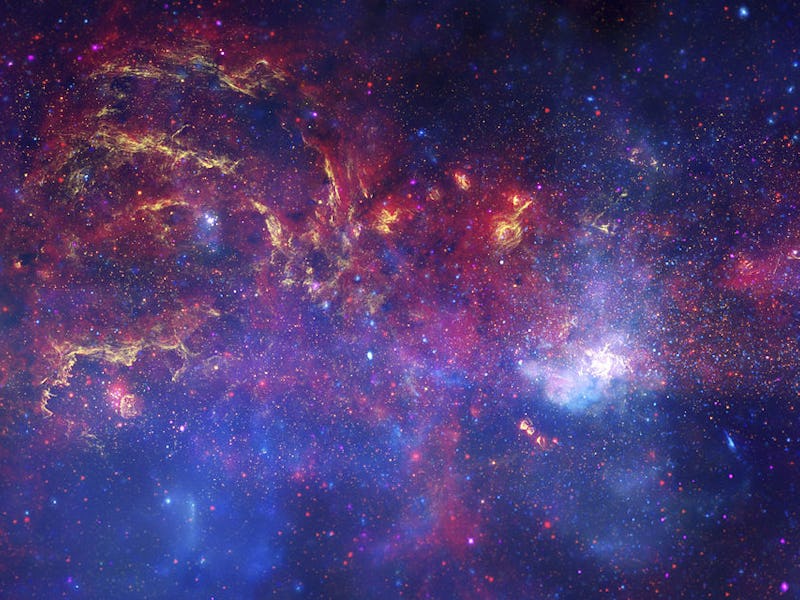Scientists recreated the origins of the universe in a 2x2 inch tube
Think of it as the 'Little Bang.'

The universe was born in the fury of a massive stellar explosion, but in October 2019 in a lab at the University of Central Florida, a team of scientists managed to recreate the flame that birthed the cosmos in a rather more humble setting — in a 2x2 inch tube, to be exact.
Scientists believe that the Big Bang resulted from a supernova explosion, but in order for that to be true, researchers assumed a pre-existing detonation or shock. The October experiment, published in the journal Science, uncovered the origin of the flame itself, finally revealing how it turned from a passive flame into an energetic one that resulted in the explosion.
This is #8 on Inverse’s 20 wildest space discoveries of 2019
“We know that detonations exist, the question was; there was always this missing link of how does it abruptly go from this mode to this mode,” Kareem Ahmed, assistant professor at the university told Inverse at the time.
The study was conducted in a 2x2-inch shock tube that induced turbulence. The tube allows a passive flame to interact with the turbulence until it drives itself to a detonation. Essentially, the tube acts like a very powerful shotgun, Ahmed said.
The team behind the recent study test out the mini-detonation in the lab.
The resulting detonation is likely mechanistically similar to the supernova explosion that we know as the Big Bang — although on a much smaller scale.
Tracing the trigger of the Big Bang may help scientists understand another mystery: How old is the universe?
“Now you use that history to trace back that main explosion,” Ahmed said. “Knowing even deeper, beyond the point of that explosion, how did that explosion come about, you go back to the main simple candle origin of that explosion.”
As 2019 draws to a close, Inverse is revisiting the year’s 20 wildest space stories. Some are awe-inspiring, some are bordering on science fiction, and some are just, well, wild. This has been #8. Read the original story here.